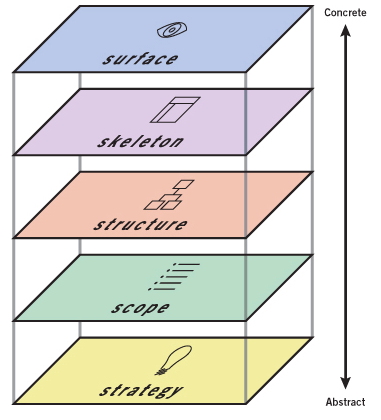Web Authoring Methodology
This web page is a collection of topics that culminates into a methodology of web design. Web design is about the user as much as it is about the creator. According to the book The Elements of User Experience, Second Edition: User-Centered Design for the Web and Beyond, "The concept of user-centered design is very simple: Take the user into account every step of the way as you develop your product." Any successful methodology of web design takes into account this fact. Also, the purpose of the site and the resources available should be taken into account. The rhetoric of web authoring, the design of web pages, the architecture of web sites, and appropriate coding for standards pages on this website together form the basis for my methodology of web authoring and design. This web site lists all the elements of this methodology of web design, which culminates in the final web page; a series of steps that should be taken when creating a web site.
No methodology about web authoring and design would be complete without a look at the five planes. The first plane is the strategy plane. According to the book The Elements of User Experience, Second Edition: User-Centered Design for the Web and Beyond, "The scope is fundamentally determined by the strategy of the site. This strategy incorporates not only what the people running the site want to get out of it but what the users want to get out of the site as well." The user should be at the center of every element of the design. Even the initial content creation should involve user centered design. The content creation is where the rhetoric of web authoring comes into play. The content must be appealing and utilizing rhetorical elements helps keep the user engaged. The next plane is the scope plane, "The structure defines the way in which the various features and functions of the site fit together. Just what those features and functions are constitutes the scope of the site." This is where the design of the site and the architecture of the site come into play. The format of the site must support the content and design. If the format is not conducive to the overall goals of the site, then it is ineffective. The next plane is the structure plane which defines "users got to the page and where they could go when they were finished there." This portion of the five planes relates to the architecture of the web site. Architecture that supports the site ensures ease of navigation and overall usability. The fourth plane is the skeleton plane, "The skeleton is designed to optimize the arrangement of these elements for maximum effect and efficiency-so that you remember the logo and can find that shopping cart button when you need it." The skeleton plane is the overall design of the website. The final plane is the surface plane which is the "series of Web pages, made up of images and text" that make up the website. At this plane all the elements of website design come together. The most important take away from the five-plane structure is how they interact. The creator does not go simply from one plane to the next but goes back and forth between planes.
The overall methodology of this web site is user centered design that holds content creation and design in constant conversation with one another.


